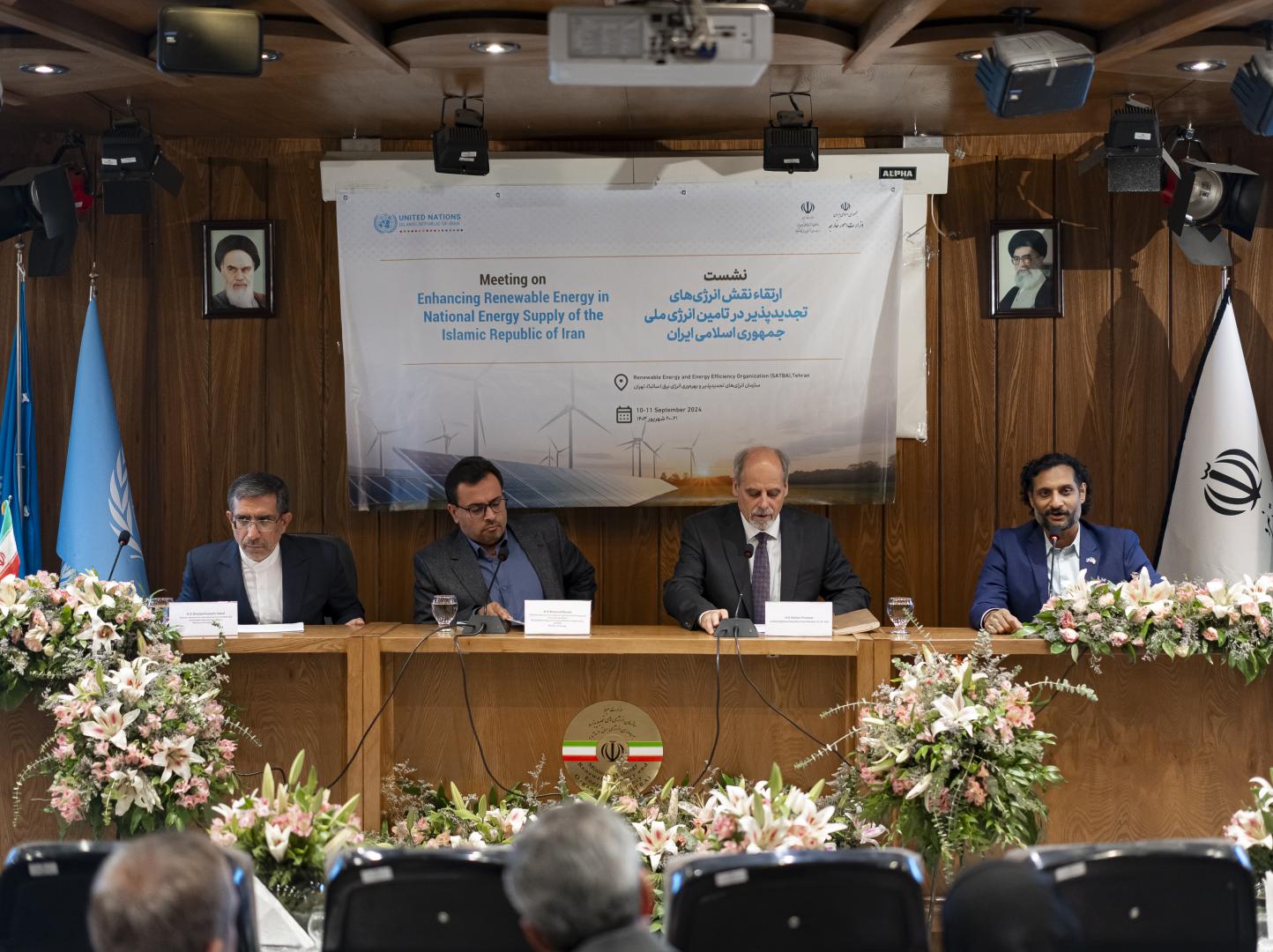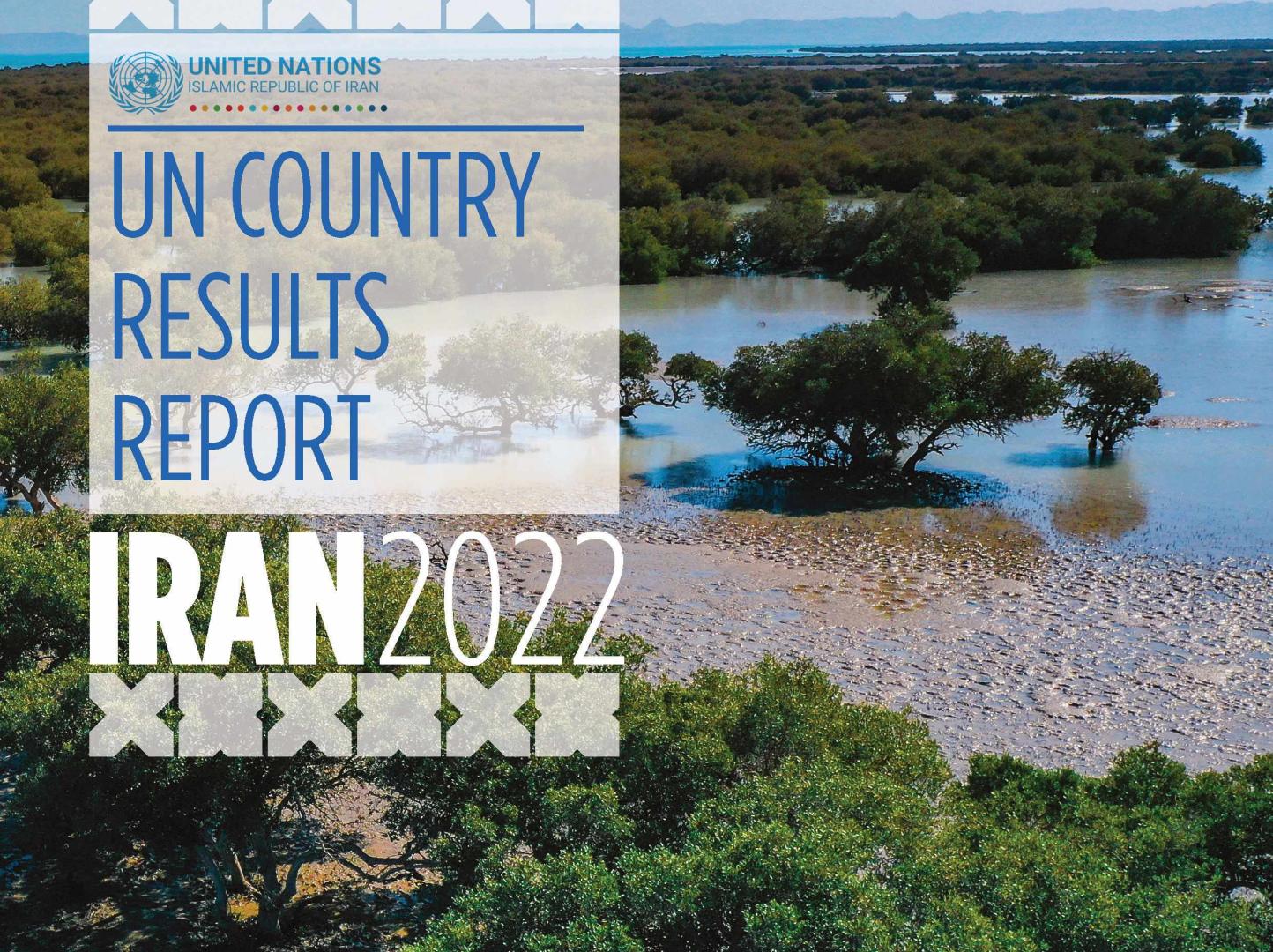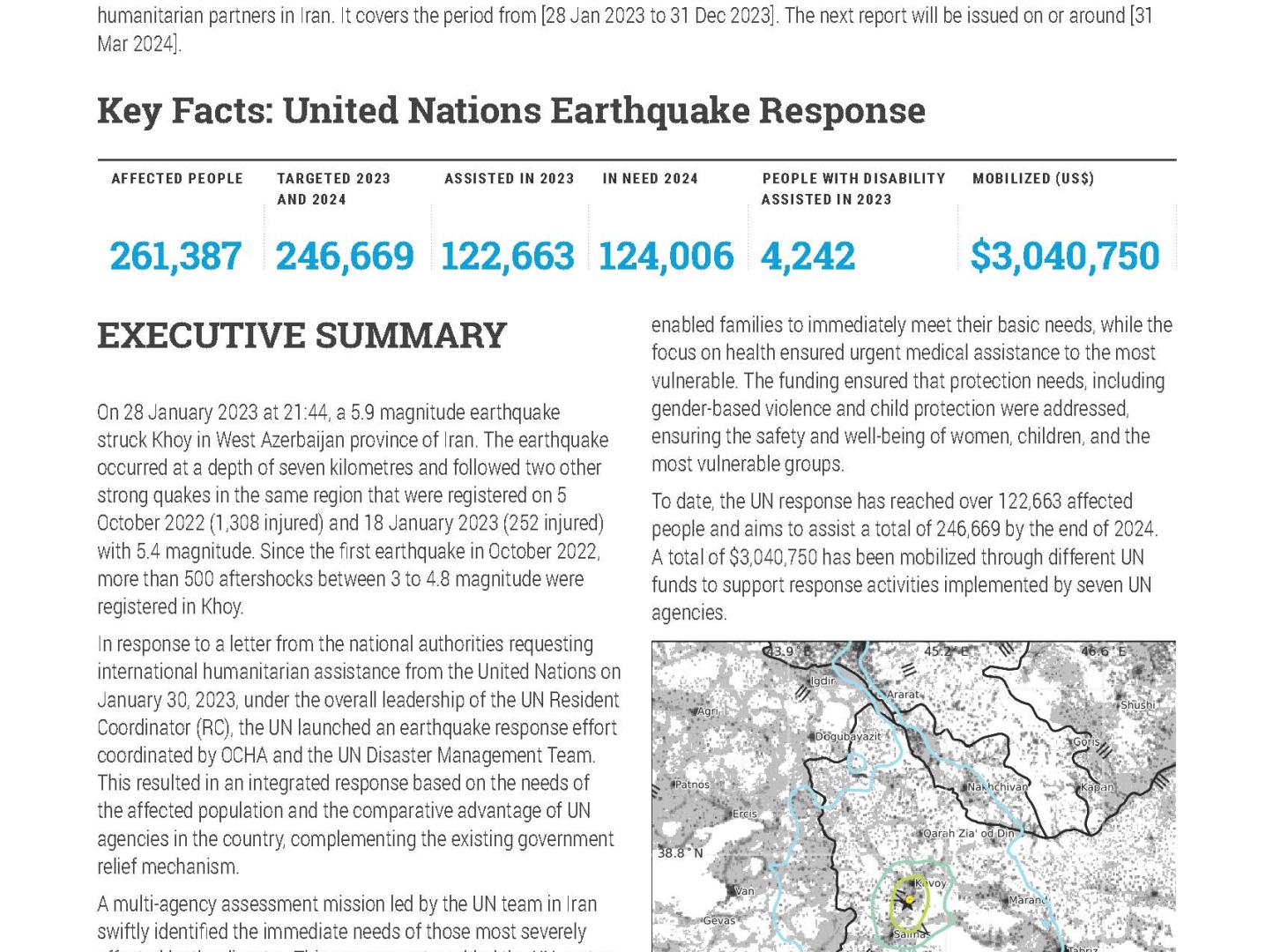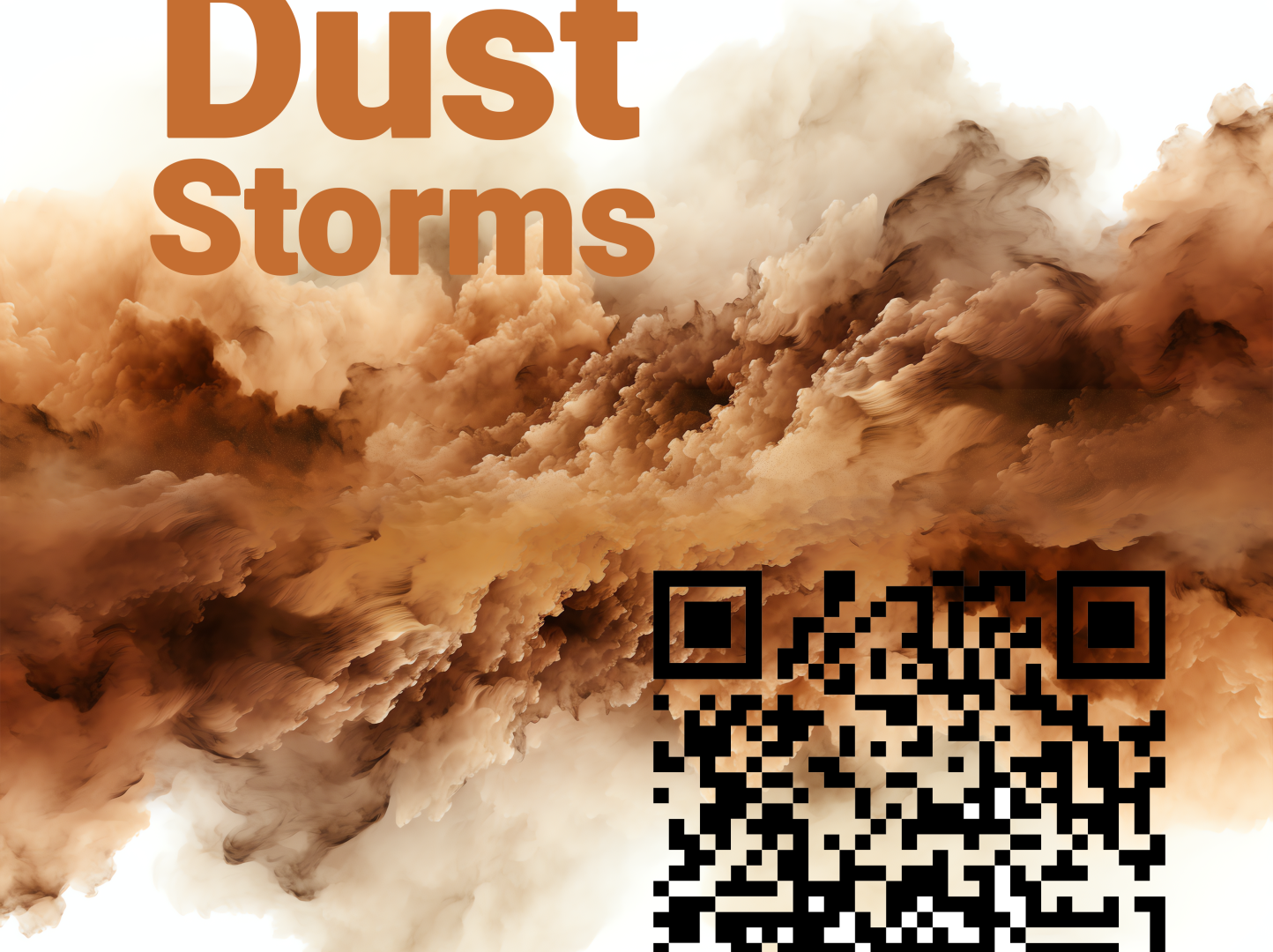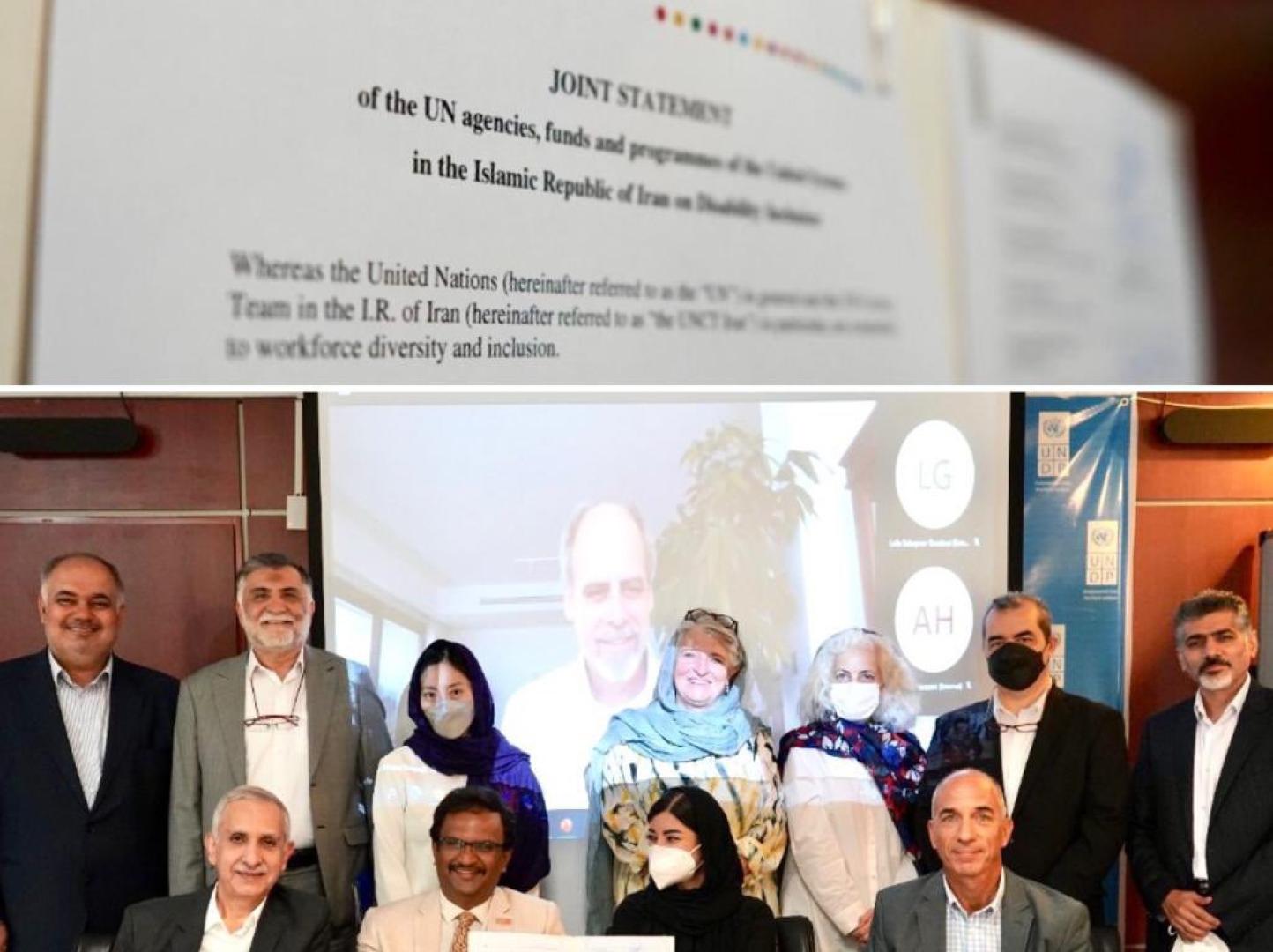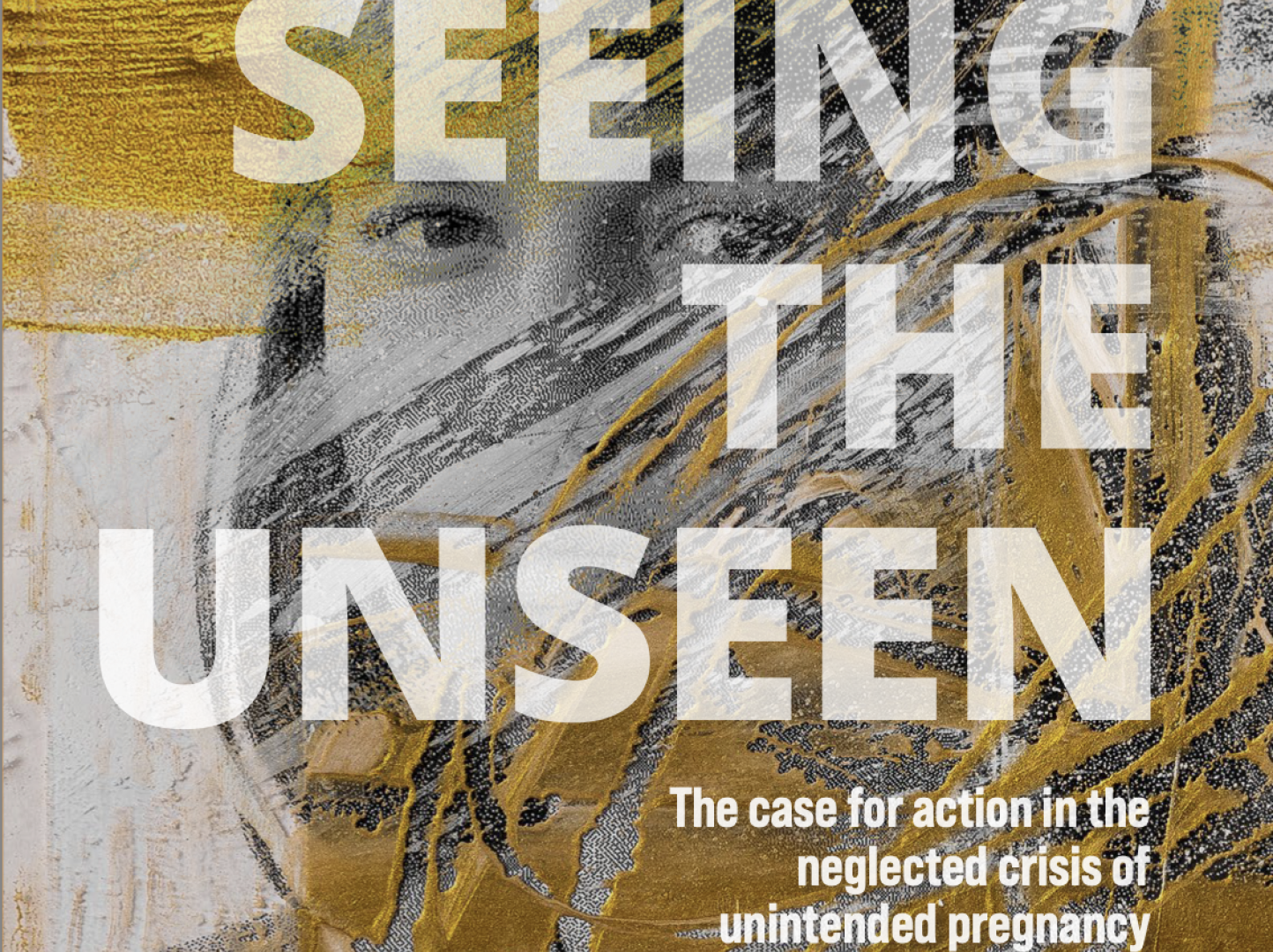Latest
Publication
01 February 2023
United Nations Sustainable Development Cooperation Framework (UNSDCF) for I.R.Iran 2023 - 2027
The United Nations Sustainable Development Cooperation Framework (UNSDCF) for 2023-2027 was developed jointly between the Government of the Islamic Republic of Iran and the United Nations System to reflect and support the national development goals and strategies. Starting in 2021, the United Nations Country Team in Iran engaged in consultations internally and with a wide range of national partners that identified the evidence base to prioritize development needs and opportunities for the UNSDCF. These consultations resulted in the vision for United Nations support to Iran’s development that is based on equitable, inclusive, resilient, and sustainable growth and development. Five strategic priorities that guide the work of the United Nations System in Iran in the coming years were identified: (a) socio-economic resilience; (b) public health; (c) environment; (d) disaster risk reduction and management; and (e) impacts of drug use and drug trafficking.
1 of 4
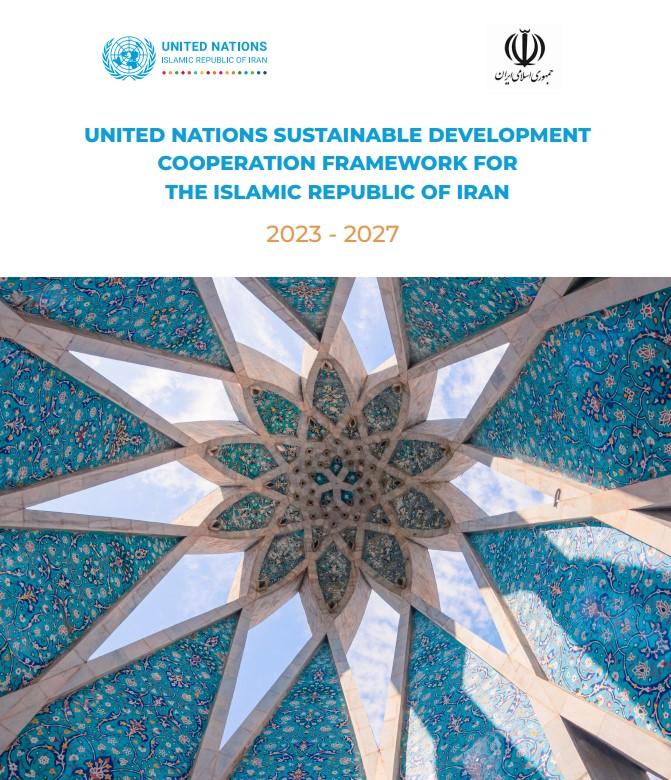
Publication
31 January 2022
United Nations Iran Country Results Report - 2021
This report lays out the UN’s collective contribution to Iran’s development and humanitarian goals, including under the current United Nations Development Assistance Framework (2017-2022).
1 of 4
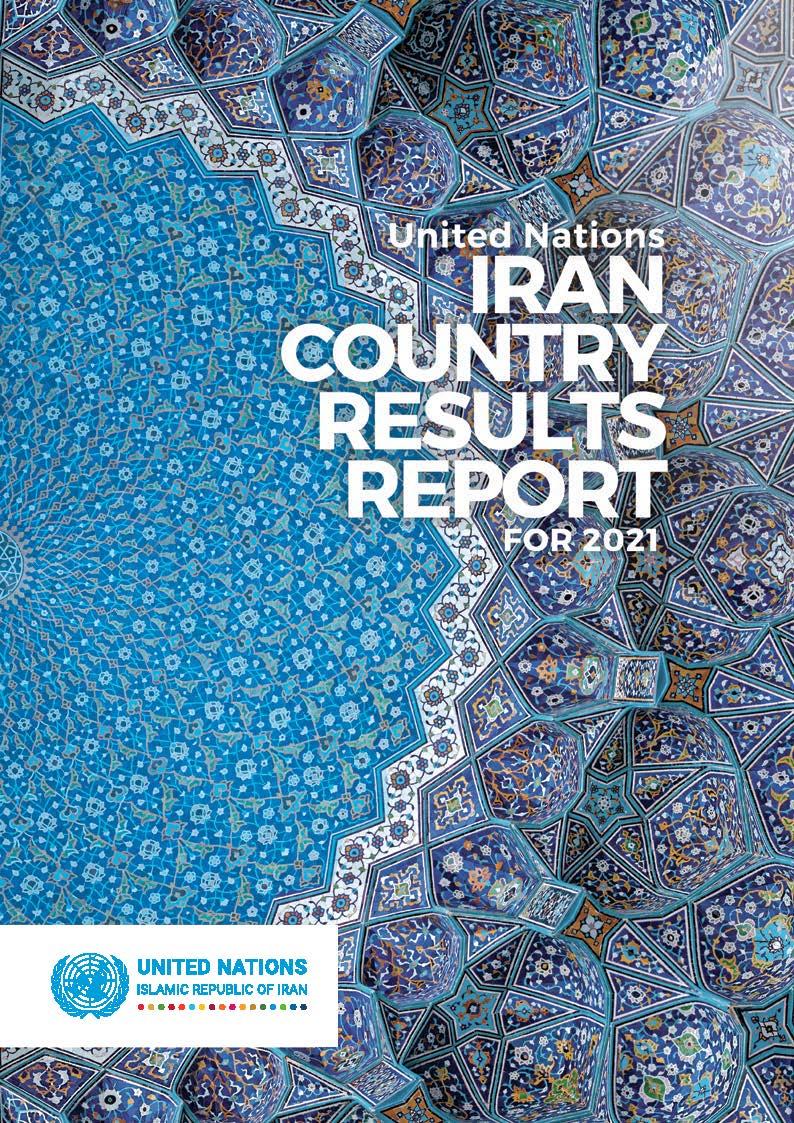
Publication
30 August 2021
UN Iran Country Results Report 2020
The UN Iran Country Results Report on behalf of the United Nations Country Team in the Islamic Republic of Iran, illustrates how, in 2020 the UN collectively supported Iran in achieving its national development and humanitarian goals. This support is provided as part of the United Nations Development Assistant Framework (UNDAF), a strategic and programmatic framework of cooperation between the UN and the Islamic Republic of Iran, currently in its fourth year (2017-2022).
1 of 4
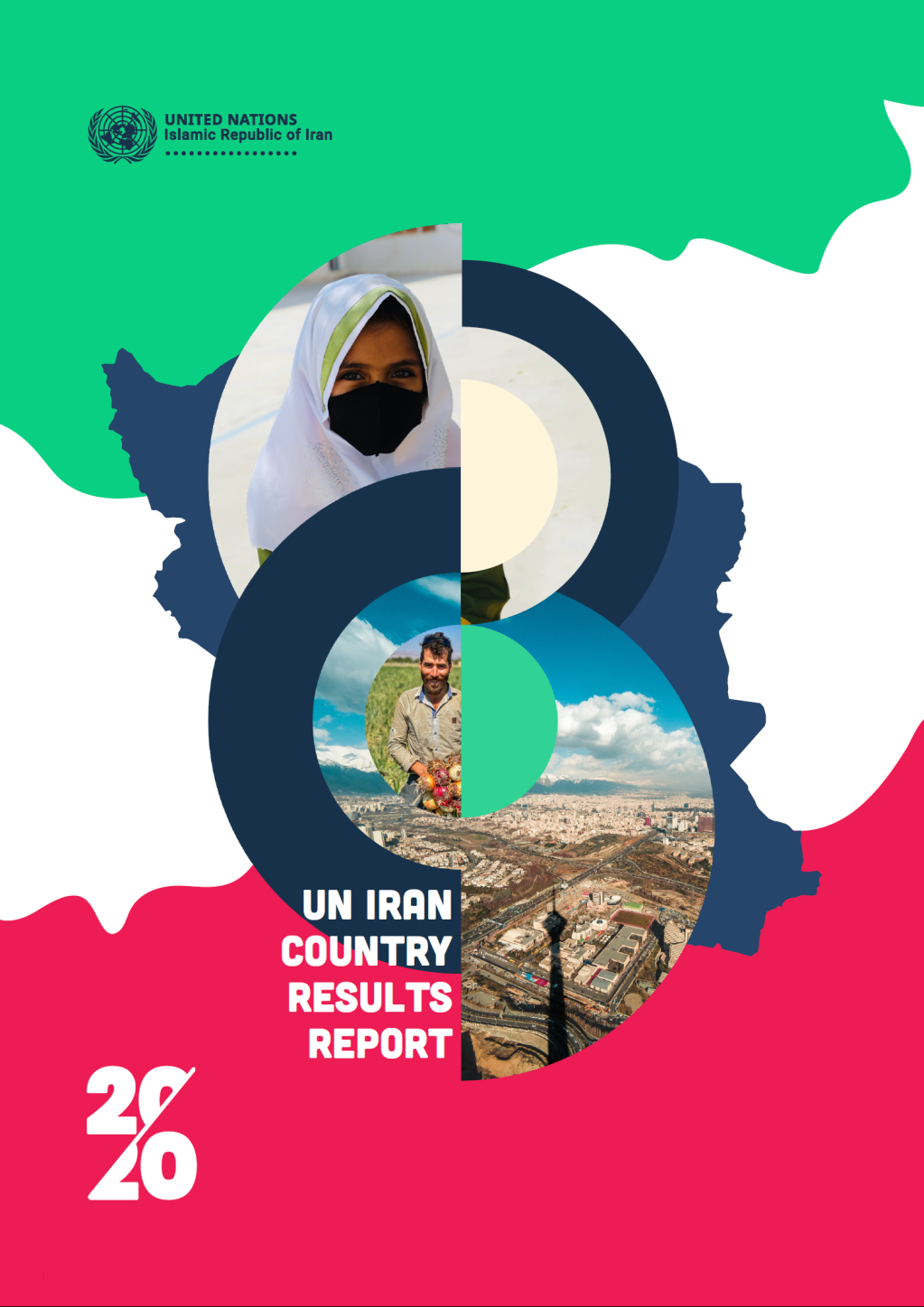
Publication
28 October 2020
UN Iran Country Results Report 2019
The UN Iran Country Results Report 2019 is prepared in line with the United Nations General Assembly Resolution 67/226 on the Quadrennial
Comprehensive Policy Review and Resolution 72/729 on repositioning of the UN Development System. It illustrates the collective results achieved
by the United Nations System in Iran during the course of 2019 in addressing the country’s national development and humanitarian priorities, alongside
national and international partners. This support is provided under the chapeau of the United Nations Development Assistance Framework (UNDAF)
2017-2021, which is a strategic and programmatic framework of cooperation between the United Nations and the Islamic Republic of Iran, with
priorities identified in line with the Government of Iran’s 6th Five-Year Economic, Cultural and Social Development Plan 2017-2021. The United Nations
humanitarian agencies operate outside the UNDAF based on their respective frameworks i.e. the Solutions Strategy for Afghan Refugees (SSAR)
for UNHCR, the Interim Country Strategic Plan (ICPS) for WFP, and IOM activities being guided by a Memorandum of Understanding signed with the
Government of Iran.
Comprehensive Policy Review and Resolution 72/729 on repositioning of the UN Development System. It illustrates the collective results achieved
by the United Nations System in Iran during the course of 2019 in addressing the country’s national development and humanitarian priorities, alongside
national and international partners. This support is provided under the chapeau of the United Nations Development Assistance Framework (UNDAF)
2017-2021, which is a strategic and programmatic framework of cooperation between the United Nations and the Islamic Republic of Iran, with
priorities identified in line with the Government of Iran’s 6th Five-Year Economic, Cultural and Social Development Plan 2017-2021. The United Nations
humanitarian agencies operate outside the UNDAF based on their respective frameworks i.e. the Solutions Strategy for Afghan Refugees (SSAR)
for UNHCR, the Interim Country Strategic Plan (ICPS) for WFP, and IOM activities being guided by a Memorandum of Understanding signed with the
Government of Iran.
1 of 4

Story
21 November 2025
FAO and Iran launch regional project to strengthen climate-resilient agriculture
Tehran, 21 October 2025 - The Food and Agriculture Organization of the United Nations (FAO), in collaboration with the Government of the Islamic Republic of Iran, has launched a new Regional Technical Cooperation Project aimed at strengthening national and regional capacities for climate-resilient agriculture. The project, which also spans Afghanistan, Bhutan, and Mongolia, seeks to promote sustainable intensification of quinoa, millets, and soybeans, crops known for their drought tolerance and nutritional value.The project was formally introduced at the National Inception Workshop held in Tehran on 21 October 2025, bringing together around 40 participants representing the government and private sectors, research institutions, civil society organizations, specialized associations, farmers, and food and feed industries, along with representatives from FAO’s Regional Office for Asia and the Pacific and the FAO Iran Representation.The workshop formed three product-based groups of stakeholders to discuss the project’s background, objectives, expected outcomes, and implementation strategy, as well as to prioritize activities and finalize the country work plan based on national needs and feedback from participants.Iran, located in an arid and semi-arid region, faces water scarcity and recurrent droughts that have increasingly strained its agricultural systems. With agriculture accounting for nearly 80 percent of total water withdrawals, the sector is vulnerable to climate change impacts such as reduced rainfall, higher temperatures, and accelerated evaporation rates.In response, the FAO regional project provides a framework for countries to address water and climate challenges through agronomic innovations, technology transfer, institutional strengthening, and awareness-raising on the nutritional and environmental benefits of climate-resilient crops.In Iran, the project will scale up drought-tolerant crops such as quinoa, millets, and soybeans, Promote Good Agricultural Practices (GAP), Participatory Varietal Selection (PVS), and Farmer Field Schools (FFS) to improve productivity and sustainability, build national capacity in climate-resilient farming systems and water-efficient practices and foster partnerships between research institutions, farmers, and private sector actors to ensure long-term adoption and scaling of resultsBy diversifying production systems and increasing water productivity, this initiative supports Iran’s broader strategy to adapt its agriculture to changing climatic conditions while safeguarding food and nutrition security for future generations.
1 of 5
Story
22 October 2025
“Tastes of Iran”
Food is the silent language of memories, a heritage lovingly passed down through generations.To mark World Food Day 2025, the World Food Programme (WFP) in Iran has launched the campaign “Tastes of Iran / چشیدنیها کم نیست”, a celebration of flavours and stories rooted in the collective memory and culture of the Iranian people.The campaign invites everyone to share their traditional recipes, from their hometowns or families, along with a real photograph of the dish or an AI-generated image inspired by it, becoming part of a national collection of tastes and memories.This initiative aims to:Celebrate Iran’s rich culinary and cultural diversity,Encourage public participation in World Food Day, andUse art and technology to revive flavours that tell stories of love, patience, and life itself.Submissions will be judged in two categories, Photography and Artificial Intelligence (AI), with three winning entries in each category, selected based on creativity, authenticity, visual quality, and thematic relevance.The jury includes Shahrzad Shokouhivand (Chef), Peyman Yazdani (Photographer), and Mohammad Seymari (AI Artist and futurist).Selected works, images, and stories will be featured in a digital book, to be shared publicly through WFP Iran’s website and social media platforms.The campaign’s media partner, Peeyade, supports the initiative as part of its corporate social responsibility, while Rood and Dastan Gallery are valued collaborators in promoting and implementing the campaign.“Tastes of Iran” is a journey, from desert to forest, plain to sea, in search of flavours that are not only tastes of food, but tastes of life. Participation GuidelinesParticipation is free, open to all, and has no age limit.Photography CategoryThis category seeks authentic and heartfelt portrayals of food, from local and traditional spreads to intimate family moments.
Each photo should tell a story, evoking flavours, gatherings, and memories behind every bite, capturing not just the appearance of food, but the culture, emotion, and life within it.Submission Requirements:Photos must be sent in .jpg format to wfp.iran@wfp.org.
(For large files, upload to a cloud platform and share the link.)Mobile photos are accepted.Minimum resolution: 10 megapixelsMaximum file size: 10 MB per photoEach participant may submit up to 10 single imagesEach photo must include a short description (max 300 words) explaining the idea, dish, or inspiration behind it.Photos must not include signatures, frames, dates, watermarks, logos, or any visual marks.If a photo is selected, the original high-quality file may be requested for publication. Failure to provide it may result in disqualification.Editing Rules:Basic edits (light, colour correction, cropping) are permitted, as long as they do not compromise authenticity.Photomontage, collage, and HDR images are not accepted.Artificial Intelligence (AI) CategoryThis category encourages imaginative and conceptual artworks that go beyond reality, creations that use new technologies to reawaken tastes, aromas, and memories, or even invent new ones.Participants may use AI tools to reimagine traditional recipes or to create visuals inspired by emotions, places, and memories, blending culture and technology, reality and imagination.Perhaps you’d like to recreate your grandmother’s dish in an enchanted courtyard, or visually narrate a forgotten flavour. This is where culinary heritage meets creative innovation.Submission Requirements:Accepted tools: all AI image-generation models (e.g. Midjourney, DALL·E, Firefly, Leonardo AI, Nano Banana, etc.)File format: JPEG or PNGAspect ratio: flexible (preferably 1:1 or 4:5 for social media)Each image must include a short description (max 300 words) about the idea, dish, or inspiration.Images must not include signatures, frames, dates, watermarks, logos, or any visual marks.If the submitted quality is insufficient for exhibition or publication, the original high-resolution file will be requested. Failure to provide it may result in disqualification.Each participant may submit up to 10 artworks.Responsibilities and CopyrightThe sender is recognized as the legal owner (copyright holder) of the submitted work and bears full responsibility for it.WFP reserves the right to use accepted works (with credit) in its publications, brochures, social media, and promotional materials related to this campaign.Participation in the campaign constitutes agreement with all the above rules.Submissions are accepted only via email: wfp.iran@wfp.orgTimelineCall for Entries: 24 Mehr 1404 (15 October 2025)Deadline for Submissions: 24 Aban 1404 (15 November 2025)Judging: Dey 1404 (December 2025 / January 2026)
Each photo should tell a story, evoking flavours, gatherings, and memories behind every bite, capturing not just the appearance of food, but the culture, emotion, and life within it.Submission Requirements:Photos must be sent in .jpg format to wfp.iran@wfp.org.
(For large files, upload to a cloud platform and share the link.)Mobile photos are accepted.Minimum resolution: 10 megapixelsMaximum file size: 10 MB per photoEach participant may submit up to 10 single imagesEach photo must include a short description (max 300 words) explaining the idea, dish, or inspiration behind it.Photos must not include signatures, frames, dates, watermarks, logos, or any visual marks.If a photo is selected, the original high-quality file may be requested for publication. Failure to provide it may result in disqualification.Editing Rules:Basic edits (light, colour correction, cropping) are permitted, as long as they do not compromise authenticity.Photomontage, collage, and HDR images are not accepted.Artificial Intelligence (AI) CategoryThis category encourages imaginative and conceptual artworks that go beyond reality, creations that use new technologies to reawaken tastes, aromas, and memories, or even invent new ones.Participants may use AI tools to reimagine traditional recipes or to create visuals inspired by emotions, places, and memories, blending culture and technology, reality and imagination.Perhaps you’d like to recreate your grandmother’s dish in an enchanted courtyard, or visually narrate a forgotten flavour. This is where culinary heritage meets creative innovation.Submission Requirements:Accepted tools: all AI image-generation models (e.g. Midjourney, DALL·E, Firefly, Leonardo AI, Nano Banana, etc.)File format: JPEG or PNGAspect ratio: flexible (preferably 1:1 or 4:5 for social media)Each image must include a short description (max 300 words) about the idea, dish, or inspiration.Images must not include signatures, frames, dates, watermarks, logos, or any visual marks.If the submitted quality is insufficient for exhibition or publication, the original high-resolution file will be requested. Failure to provide it may result in disqualification.Each participant may submit up to 10 artworks.Responsibilities and CopyrightThe sender is recognized as the legal owner (copyright holder) of the submitted work and bears full responsibility for it.WFP reserves the right to use accepted works (with credit) in its publications, brochures, social media, and promotional materials related to this campaign.Participation in the campaign constitutes agreement with all the above rules.Submissions are accepted only via email: wfp.iran@wfp.orgTimelineCall for Entries: 24 Mehr 1404 (15 October 2025)Deadline for Submissions: 24 Aban 1404 (15 November 2025)Judging: Dey 1404 (December 2025 / January 2026)
1 of 5

Story
16 September 2025
Advancing Saffron Authenticity Testing Methodologies
The Food and Agriculture Organization of the United Nations (FAO) has signed a Letter of Agreement (LoA) with Mashhad University of Medical Sciences (MUMS) to strengthen the methodologies of controlling quality, determining authenticity and improving market confidence of Iranian saffron, one of the country’s most valuable exports.Activities of the LoA will be conducted under the joint Technical Cooperation Programme of FAO and the Ministry of Agriculture Jahad.Iran produces more than 90 percent of the world’s saffron, making the integrity of the value chain critical for farmers and for national trade. Known as “red gold,” this spice is not only important for farmers’ livelihoods but also a symbol of Iran’s agricultural heritage. Saffron’s global trade faces persistent risks from adulteration to inconsistent post-harvest handling that can erode value and weaken consumer trust."To address these issues, FAO is collaborating with MUMS to strengthen procedures how saffron is tested, processed, and marketed. “The FAO–MUMS collaboration responds to the challenge by combining advanced laboratory verification with field-ready post-harvest guidance to better define saffron’s quality and protect authenticity and reputation” said Mr. Farrukh Toirov, FAO Representative in the Islamic Republic of Iran.At the core of the work is a scientifically validated fingerprinting approach using high-resolution Nuclear Magnetic Resonance to characterize saffron’s three key constituents (crocin, picrocrocin, and safranal) supported by robust data analysis. This will provide a more precise chemical profile for authenticity checks than routine methods alone. Complementing the lab work, the initiative will develop practical guidance to help preserve colour, flavour, and aroma after harvest so that quality measured in the lab is maintained through to the final consumer.Equally important, in the framework of this LoA, MUMS will train farmers, traders, and laboratory experts across the main saffron-producing provinces of Khorasan Razavi, North Khorasan, and South Khorasan. This training will help to develop the understanding that everyone involved in the saffron value chain should apply better practices, meet international requirements, and offer buyers around the world a product they can trust.While international trade commonly references ISO 3632 / 3632-1 for grading saffron, these basic tests do not always capture subtle quality differences or guard against sophisticated adulteration, and they provide limited guidance on post-harvest handling. By promoting higher quality and stronger safeguards, improved practices and advanced quality control protocols will help to reduce fraud, build consumer trust, and increase transparency in saffron markets. This will create better opportunities and returns for farmers and traders while enhancing Iran’s reputation as the global source of authentic saffron.This work forms part of FAO’s wider efforts to support Iran in improving food authenticity, strengthening agricultural value chains, and ensuring that local food products are competitive in international markets and adhering with international quality and safety requirements.
1 of 5
Story
02 September 2025
Cooperatives Build a Better World
The second International Congress on Cooperative Economy, held under the theme “Cooperatives Build a Better World”, was held in Tehran on September 02, 2025, with the support of the United Nations in Iran. It brought together a diverse group of stakeholders to explore the role of cooperatives in achieving sustainable development, economic resilience, and social equity. The event takes place in the context of the UN International Year of Cooperatives 2025, and aims to strengthen international cooperation in the cooperative sector, promote innovation and productivity, and elevate Iran’s position in global cooperative diplomacy. In his opening remarks, the UN Resident Coordinator in the Islamic Republic of Iran, Mr. Stefan Priesner, also emphasized that cooperatives drive global progress by creating jobs, promoting sustainability, and empowering communities. In Iran, they are the recognized “third pillar” of the economy, with over 104,000 cooperatives supporting agriculture, transport, fisheries, housing, and industry, making them key to national growth and resilience. “From the forests of Brazil to the fisheries of Iran, from the coffee plantations of Kenya to the dairy farms of India – Cooperatives are proving every day that people, when united, can create prosperity with dignity. They are proving that Cooperatives are not just a means of economic empowerment, they are also vehicles of social inclusion,” added the Resident Coordinator. The congress gathered 1,120 of participants from government ministries, UN agencies, funds and programmes, international organizations, civil society, academia, and diplomatic missions. Other speakers from the UN system agencies included representatives from the UN Development Programme (UNDP), Food and Agriculture Organization (FAO), and the UN Department of Economic and Social Affairs (UNDESA). The conference’s key themes focused on a range of relevant issues, including cooperatives and sustainable development, cooperative justice and community empowerment, the role of women and youth, innovative financing models, and cooperative integration into public sector reform and national value chains. The congress is organized by the Iran Chamber of Cooperatives (ICC) in collaboration with the Ministry of Cooperatives, Labour and Social Welfare, in coordination from the International Cooperative Alliance (ICA) and support from UN Iran.
1 of 5

Story
19 August 2025
Spin of Courage: How Table Tennis Helped a Teen Discover Her Strength
It was on a summer afternoon in 2020 when Hananeh Nejati, then 14 years-old, walked into Tehran’s Spin Club, the same club where she first learned how to play table tennis and had trained for the past two years. But on this day, Hananeh did something that changed her life. For the first time ever, Hananeh removed the prosthetic leg she had lived with ever since she was a child, and trained with teammates with her amputated right leg visible to all. “I felt free,” says Hananeh. “I felt that I was finally being myself.”Hananeh says prior to that day, she was a shy girl who lacked confidence and didn’t talk to anyone. “Due to my physical condition, I thought I was weak,” says Hananeh. Hananeh was born with a congenital leg defect that required doctors to amputate her right leg just above the knee. During her early school years, hiding her physical disability and her prosthetic leg was a daily routine. For Hananeh, a good day was just being left alone by her classmates. “The first day she came to the club, she hid behind her mother,” says Hoori Aghamiri, a table tennis coach and founder of the Spin Club in Iran.The Spin Club is a nonprofit table tennis club that promotes inclusion and empowerment of women and girls, including refugees and women and girls with disabilities. As part of its mission to leave no one behind, UNFPA has proudly partnered with the Spin Club and helped fund various programmes designed to promote the rights of the most vulnerable. Hananeh’s first visit to the Spin Club was the start of a journey to win back her confidence and self-esteem. “When I started playing and getting used to this environment, I found my inner strength,” says Hananeh. “It’s true that I’m different, but that doesn’t mean I’m worth less than others.”It was that boost in her self-confidence that led Hananeh to remove her prosthetic leg in front of her coaches and teammates. Soon after, she decided to take her prosthetics off in school too. “I felt more comfortable. My classmates and teachers felt comfortable too,” says Hananeh. “In the past, I had to cover my prosthetic to hide it. Now, I know how to take it easy. This is who I am.”Just two years after she started training at the Spin Club, at the young age of 15, Hananeh won the silver medal at the 2021 Para Table Tennis Asia Championships. Today, she coaches younger players at the Spin Club and is arguably the best para table tennis player in Iran for her age group. “She was like a diamond in the rough, hidden from view. Now she’s shining for everyone to see,” says Aghamiri, her coach. “Seeing girls like her grow makes me feel that I have fulfilled my life’s purpose.” Hananeh says she plans to push herself to be the best player she can be and maybe someday compete in the Paralympics, but her priority is to continue to grow, keep having fun, and show others that true freedom is finding your Self.“In the past, I was scared to come out in the open and show myself. Then I realized maybe there’s someone just like me, and by seeing me she’d realize that being yourself is nothing to be afraid of.”
1 of 5

Press Release
10 June 2025
Tehran Hosts High-Level UN–Iran Panel on Safeguarding the Zagros Forests
The event, co-hosted by the Iran’s Ministry of Foreign Affairs, the Natural Resources & Watershed Management Organization, the Plan and Budget Organization and the United Nations Resident Coordinator’s Office, is the last of seven thematic panels feeding recommendations to the International Conference on Sustainable Zagros Forest Management on 29 June 2025.In his keynote address, Deputy Foreign Minister for Legal and International Affairs Dr. Kazem Gharibabadi described the Zagros as “a priceless heritage for Iran and the world” and called sustainable forest management “an essential tool to fight climate change, safeguard water resources and ensure prosperity for future generations.” Dr. Gharibabadi added that “the future of the Zagros will profoundly shape the future of our planet. Let us work together for a better planet.” Deputy Foreign Minister Ghariabadi underlined the need for the transfer of technology and financing from developed countries.UN Resident Coordinator in the Islamic Republic of Iran, Mr. Stefan Priesner, also highlighted the forests’ role as the hydrological backbone of western Iran and called for “environmental financing to become a priority for all stakeholders,” adding that Bakhtiari nomads and other local communities “must be at the centre of conservation efforts. These oak mountains are not just scenic—they are foundational to Iran’s history, culture and future. Protecting them is a shared responsibility.” said the Resident Coordinator. “Without urgent action, we risk losing not only the Zagros forests but the life systems they support.” Covering almost 6 million hectares—about 40 percent of Iran’s total forest area—the Zagros oak woodlands regulate water, prevent soil erosion and support millions of rural livelihoods, yet have shrunk by nearly half in 80 years because of illegal logging, overgrazing and climate change. ***********************For further information please contact United Nations Information Centre (UNIC) in Tehran:+989121053220Unic-tehran@un.org
1 of 5
Press Release
16 January 2025
THE EUROPEAN UNION SUPPORTS THE MOST VULNERABLE REFUGEES IN IRAN THROUGH ADDITIONAL FUNDING TO WFP
This critical funding enables WFP’s to sustain its cash support programme for refugees until early 2025. The programme has already made significant progress over the past months empowering refugees to meet their basic needs.Iran hosts one of the largest refugee populations globally, with 3.8 million refugees and individuals in refugee-like situations, the majority of whom are from Afghanistan. With the generous support of donors, WFP provides vital assistance to 33,000 of the most vulnerable refugees across 20 settlements. This support includes food, cash assistance, school-based programmes, and livelihood opportunities, all aimed at supporting their resilience and eventual voluntary repatriation.In partnership with the EU, WFP has achieved key milestones; providing thousands of refugee families with monthly cash assistance. This innovative approach gives refugees freedom of choice and restores a sense of normalcy into their lives by allowing them to buy food items of their choice in local shops to diversify their diets."The funds received will directly touch the lives of thousands of refugees in Iran, providing them with necessary support and ensuring their well-being and stability amidst challenging circumstances,” said WFP Representative in Iran Maysaa Alghribawy. "However, the needs remain great, and we urge other donors to join us in our mission to ensure food security for all."With the additional resources, WFP Iran aims to continue its operations seamlessly, providing life-saving assistance to those in need. The organization remains committed to working closely with the EU and other partners to address food security challenges refugees in Iran face.# # # The United Nations World Food Programme is the world’s largest humanitarian organization saving lives in emergencies and using food assistance to build a pathway to peace, stability, and prosperity for people recovering from conflict, disasters, and the impact of climate change.Follow us on X, formerly Twitter, via @wfp_media, @wfpiranFor more information please contact (email address: firstname.lastname@wfp.org):Dara Darbandi, WFP/ Iran, Mob. +98 912 308 4147
1 of 5
Press Release
01 December 2024
UNDP Welcomes New Contribution from Japan to Strengthen Wetland Management and Climate Resilience in Iran
Japan has been a key partner of the Government of Iran and UNDP since 2014 in supporting sustainable natural resource management in wetland basins and diversifying livelihoods of communities reliant on wetlands. During the signing ceremony on 1 December 2024 the Government of Japan and UNDP signed exchange of notes to implement "The Project for Developing Conservation System of Wetlands in Lake Urmia and Other Wetlands including their Surrounding Communities." The project will be jointly implemented with the Department of Environment and in collaboration with the Food and Agriculture Organization of the United Nations (FAO) from 2024 to 2028.The project will build on the past achievements and will accelerate efforts to successfully scale up piloted models and practices. By focusing on sustainable agriculture and alternative livelihoods that are adapted to climate change, the initiative seeks to create long-term benefits for local communities while preserving the biodiversity of wetlands as vital ecosystems."Over the past ten years, the unwavering support from the People and the Government of Japan has positively impacted agricultural productivity and enhanced livelihoods in target communities. In the next four years, we will continue promoting innovative, water-efficient agricultural practices, while emphasizing scaling up for a better future for all.” said Gulbahor Nematova, UNDP Iran Deputy Resident Representative. H.E. Mr. Tsukada, the Ambassador of Japan to Iran stated: “Iran has 26 valuable wetlands listed under the Ramsar Convention, including Lake Urmia. These wetlands, which are home to diverse species and migratory birds, must be conserved in cooperation with the international community.Over the past 10 years, Japan has provided support for Lake Urmia conservation, but in order to further restore the wetland, it is essential to manage uncontrollable water extraction, develop an irrigation system that appropriately respond the climate change, and create sustainable industries such eco-tourism.In addition to directly tackling these challenges, this project’s knowledge and technologies will be utilized in other wetlands in Iran.We hope that the new project signed today will contribute to the environmental protection and economic development of the areas around the wetlands.”Media contact in UNDP Iran: communications.ir@undp.org ### ### ### UNDP is the leading United Nations development organization. Working with our broad network of experts and partners in 170 countries, we help nations to build integrated, lasting solutions for people and the planet.Learn more at www.undp.org/Iran and follow us on Instagram and X: @UNDPIran.
1 of 5
Press Release
25 August 2024
Iran partner with FAO and Green Climate Fund to strengthen climate resilience
The newly signed project, titled “Strengthening Iran’s access to GCF with national ownership, knowledge-based policies and sound technologies,” represents a crucial step towards aligning national strategies with climate action and promoting sustainable development.Iran, like many nations, faces the challenge of climate change and grappling with its adverse effects, including escalating droughts and catastrophic floods further exacerbating water scarcity issues affecting ecosystems, biodiversity, food production and economy. In response, Iran's National Strategic Action Plan on Climate Change 2017 outlines a comprehensive roadmap for climate adaptation and mitigation, contingent upon securing financial and technical support under the United Nations Framework Cooperation on Climate Change (UNFCCC).Engaging all key stakeholders including government, private sector and NGOs, the inception workshop for this project is held on 19 August, marking the official launch of this crucial initiative and setting the stage for collaborative efforts towards achieving climate resilience in the country.This transformative initiative between the Islamic Republic of Iran, GCF and FAO aims to fortify the country's resilience to climate change through a multifaceted approach. By fostering closer coordination with GCF and other climate finance institutions, establishing direct access to GCF resources, and integrating climate change considerations into development planning, the project seeks to pave the way for strategic climate investment promotion. Additionally, by facilitating access to advanced climate-resilient technologies and engaging both targeted sectors and the private sector in climate action initiatives, Iran aims to develop a robust pipeline of climate projects aligned with national priorities and GCF standards. Anticipated outcomes include enhanced national coordination mechanisms, the development of a strategy for direct access to the GCF, an updated GCF Country Programme, and the establishment of a comprehensive National Climate Change Knowledge Hub (NCCKH).The establishment of NCCKH will serve as a vital resource for disseminating technical knowledge and raising public awareness, ultimately contributing to enhanced national resilience and sustainable development.
1 of 5
Press Release
12 August 2024
UN-Organized Art Exhibition Raises Awareness on Global Environmental Challenges
This exhibition is organized by the United Nations Development Programme (UNDP) and the United Nations Information Centre (UNIC) in the Islamic Republic of Iran, with the partnership of Ech Art Gallery and ArtUnity. The exhibition brings together 18 artists and 36 works of art. Visitors will encounter thought-provoking pieces – with accompanied information and statistics – that challenge us to reflect on our relationship with nature and our role in its conservation and preservation. These powerful artworks are more than just visual experiences; they are calls to action, urging us to acknowledge the severity of our environmental challenges as a global community and to work collectively towards sustainable solutions.“The purpose of the exhibition is to raise public awareness about the severe environmental stress that our beautiful planet is exposed to,” said the UN Resident Coordinator, Stefan Priesner, at the opening ceremony of the exhibition. “While the scope of environmental challenges is extremely concerning, the positive news is that solutions exist, and humanity can tackle the triple planetary crisis. We need stronger commitment and increased resources to guide humanity towards a sustainable future,” he added. The exhibit is open to public 9-17 August 2024, from 16:00-22:00, at Ech Art Gallery (No. 10, Mirza Taraj Alley, Shariati Street, south of Cinema Farhang, Tehran). UNDP together with other UN sister agencies, funds, and programmes, works closely with national and international partners to promote the integration of environment-friendly policies into all sectors. UN and its partners advocate for improved management of natural resources and biodiversity conservation and strive to increase national capacities to address climate action, including through international advocacy for climate finance. Additional Information:The exhibition brochure in English
1 of 5
Latest Resources
1 / 11
Resources
24 December 2024
Resources
18 April 2024
Resources
07 February 2023
1 / 11




















